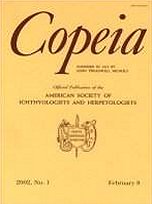Patterns of population subdivision and gene flow were quantified using allozymes in three sympatric species of natricine snakes from the island region of western Lake Erie. Species share similar population history (post-Pleistocene range expansion followed by subdivision into island and mainland demes) and life-history characteristics. However, species differ in anticipated rates of gene flow because of differences in body size and degree to which they use aquatic habitats. Significant population subdivision was present in all three species, and isolation by distance was evident in water snakes (Nerodia sipedon) and, to a lesser degree, in brown snakes (Storeria dekayi) but not in garter snakes (Thamnophis sirtalis). As predicted, water snakes, the largest and most aquatic of the three species, showed significantly less population structure (lower values of FST) than did the smaller and more terrestrial garter snakes and brown snakes. Furthermore, variance in locus-specific estimates of FST was highest for brown snakes, intermediate for garter snakes, and lowest for water snakes. Estimates of FST obtained in this study are similar in magnitude to those reported for other snake species that have undergone post-Pleistocene range expansion but are lower than those reported for some southern U.S. species that may have experienced longer periods of isolation.
How to translate text using browser tools
1 August 2001
Patterns of Population Subdivision and Gene Flow in Three Sympatric Natricine Snakes
R. B. King,
R. Lawson
ACCESS THE FULL ARTICLE





